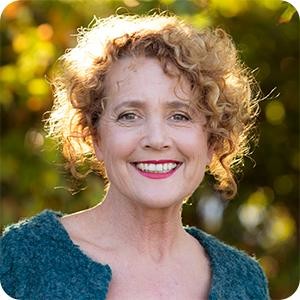leadership
The Power of Your Stories
Published: July 13, 2015
Read Time: 5 minutes

Often when I’m working with not-for-profit (NFP) organisations, I find myself sitting opposite a member of the Board. I look across the desk and see an accomplished, sincere and, let’s face it, very busy person and I’m always shaking my head and asking: ‘Why do they give their time? What moved them to put up their hand?’
I’m not sure many board members ask themselves these same questions though – except perhaps when facing frustrations or juggling competing priorities. If pressed, he or she might say ‘To give back’ or ‘It’s a way to contribute to a community that we all want to live in.’ But it’s the deeper, individualised answer to the ‘Why me?’ question that will inspire others to lean in and listen closely. And yes, put up their own hands to join us. The story of why-we-do-what-we-do is gold. It resonates at a very human level and engages others to see themselves alongside us: in donations, volunteering or partnership. It’s one of the greatest weapons in any board member’s arsenal.
Several years ago, then CEO of the Australia Council of the Arts, Kathy Keele, asked me to explore what we could do to bring about greater appreciation for her board. It was a time when pressure was on arts organisations to be more business–centric if they were to survive. Kathy was very alert to how her community perceived this change and resistant to it. She was very proud of the board. It was filled with people with diverse experience of finance and management but they had no arts background to speak of. Kathy well understood how this might be interpreted. What on earth were these people doing leading an arts board? How could they possibly understand the things that were so important to the arts?
We decided to gather stories that showed the board’s deep, personal connection to the arts in Australia. These stories would replace the traditional bios on the website and equip the board members with new perspectives for public engagements and media opportunities.
Fast forward to my first story-gathering conversation. It was with the late James Strong AO, who was Chairman of The Australia Council at that time. James was also Chairman of Woolworths and had chaired many arts organisations including The Sydney Theatre Company and The Arts Business Foundation. So yes, he was busy. Very busy.
Kathy told me not to expect much time with him. I’d asked for an hour and she told me I was dreaming. She said if I could get his Executive Assistant to find me 15 minutes, I should think myself lucky. So off I went, not just a little daunted and ready to speed track. I found James high in his tower in the Sydney CBD and I asked him to tell me about the first time the arts had made a difference to his own life.
It was as if he had been sitting there behind his big, shiny desk just waiting for someone to ask him precisely that question because he took to it with gusto. Soon we were transported to a milking shed in Alstonville, in the NSW Northern Rivers where he grew up. He was jumping from warm cow patty to warm cow patty in bare feet. He was a typical country kid with no experience of the arts at all and destined for Duntroon.
It was there that he studied English literature for the first time and when reading Patrick White’s The Tree of Man, he was shocked to recognise people just like his own family. He said it was as if White had met his own Dad and in fact, knew him better than James did himself. And that was the moment for James. The moment when he understood that artists can explain us to ourselves: that they can see and bring us clarity about our shared humanity.
On reading that story, anyone with a love of books could easily understand and relate to James’ experience. Suddenly he is not just a suit. He’s an arts lover. And luckily, one with a great deal of commercial acumen to share.
After my 15 minutes with James had stretched past an hour, I reminded him of the time. He waved my concern away. ‘Don’t worry, don’t worry’ he said ‘They’ll wait.’ And they did. When I finally left that office, many stories later, James was very happy. He had re-discovered the experiences that fuelled his dedication and was invigorated by that. Shortly after, I had my own discoveries too – a very full (and unhappy) waiting room and a flustered assistant.
Every board member needs to discover stories that communicate their values and purpose. Authentic stories connect us genuinely with other people who share the way we see the world and our stories can inspire them to put their hand up too.
However it’s not just individual stories that board members can tell to great effect. We can use opportunities with our networks and connections to tell the stories of our organisations too. All board members should have three stories ready to go…
- The story of why you support this cause.
- A story that shows the value of the work the organisation is doing.
- A story that illustrates the impact donors and supporters can bring.
But actually, why stop at just three? Create spaces in board meetings for stories to be shared. Invite staff and clients in to share them. In my work, I have seen stories move mountains. We can all move mountains too.
Share this Article
Recommended Reading
Recommended Viewing
Author
-
Founder
Only Human Stories
- About
-
Moya is regarded as one of Australiasia’s leading experts for NFP’s and purposeful people. She founded onlyhuman.com.au in 2005 after gathering a collection of stories about families suffering disadvantage. She’d probably describe that experience as an epiphany (if she was sure how to spell it).
Her visionary clients come from all sectors and include NSW Cancer Council, Uniting, Victorian Women’s Trust, Department of Veterans Affairs, Queensland Mental Health & the New Zealand Department of Internal Affairs. Over the years, she has developed deep understanding of the sector and the passionate humans who want to make an impact. And feel the joy of making a difference.
Her first career was as a novelist (Penguin, Allen & Unwin), comic columnist and screenwriter. As the original Modern Guru for The Sydney Morning Herald Good Weekend magazine, Moya mused on the mercurial dynamics of human behaviour and her own stories. These days, she is focused on helping other stories be told and heard.
Moya inspires brains to roam outside the box and encourages those brains to enjoy the feeling.
Found this article useful or informative?
Join 5,000+ not-for-profit & for-purpose directors receiving the latest insights on governance and leadership.
Receive a free e-book on improving your board decisions when you subscribe.
Unsubscribe anytime. We care about your privacy - read our Privacy Policy .







